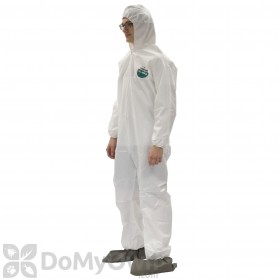
It is a smart idea to check your home once a year for drywood termites, especially if you live in the southern coastal United States. Doing your own inspection might seem like a daunting idea, but a DIY termite inspection is truly not that difficult and can give you peace of mind.
We do recommend getting a professional inspection every few years, especially if your home has areas that are difficult to inspect or lots of wood that meets the ground.
The following tips can help you perform a thorough and successful termite inspection at home.
How to Check Your Home for Drywood Termites

Inspecting for termites can be a dirty job. You might want to purchase and wear a pair of disposable coveralls and a pair of gloves. A bright flashlight will come in handy to light dim or dark areas and a flat-head screwdriver will allow you to probe wood to find weaknesses that indicate termite infestations.
To complete your inspection, you will need to do a thorough walk-through around the perimeter of your home and inside your home.
Pay special attention to the following areas around the home:
- Window sills and frames, door frames, and wooden doors
- Wooden cabinets and wooden floors
- Wood elements of construction in attics, basements, and wall voids
- Wood piles and debris near the foundation of the home, including exterior door and window frames, fence posts, and tree stumps
When inspecting for a drywood termite infestation, be on the lookout for small holes in wood, damaged wood, and live termites. Specific signs of a drywood termite infestation to look for include:
- Damaged Wood - Wood with sustained drywood termite damage might look "crushed" at the structural joints. If you tap the damaged wood with the end of a screwdriver or knife and hear a dull thud, that is a sign of termites. If you suspect wood has been damaged by termites, probe the surface with a screwdriver or pocket knife to expose possible tunnels. Drywood termites can excavate tunnels that run both parallel to the grain or across the grain of the wood.
- Small "Kick Out" Holes in the Wood - Drywood termites make small holes in wood to discard their feces. These holes are typically the size of the tip of a ballpoint pen.
- Feces Pellets - Drywood termite droppings are hard, dry, and six-sided. The color will vary from brown to tan.
- Piles of Wings - Before drywood termite swarmers enter the next stage of development, they will shed their wings. Discarded wings are often left scattered in piles near windows or other light sources.






